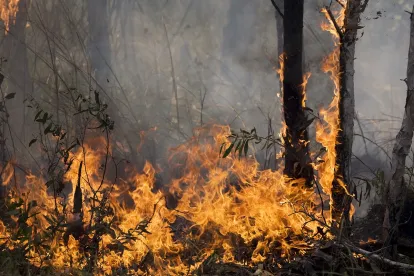As Hawaii deals with the tragic aftermath of recent wildfires that have claimed more than 100 lives and more than 2,000 buildings in Maui, the potential economic fallout is just beginning to take shape. Some experts predict the losses related to the wildfires could result in the biggest disaster-related insurance payout in Hawaii’s history, with property damage alone surpassing $3.2 billion. This post explains the types of losses that usually follow wildfires and the insurance coverages that can respond to such losses. We also offer tips for homeowners and businesses to maximize their insurance recovery in the event of a catastrophic wildfire loss.
Types of Wildfire-Related Losses
As we have explained before in a seven-part series delving into issues relating to wildfire insurance coverage, wildfires take a devastating toll on individuals and businesses alike. Individuals suffer bodily injuries and some are forced out of their homes, which must be rebuilt to be habitable. Stores, offices and warehouses are destroyed along with their contents. Businesses are forced to close and suspend their operations. The supply chain is disrupted by lack of access to areas or the inability of a business partner impacted by the wildfires to fulfill previously scheduled orders required for a business to manufacture its goods. Policyholders may also be liable to third parties who claim that the policyholder’s actions caused them to sustain bodily injury or another loss. These are just some of types of losses that can follow a wildfire.
Which Policies May Cover Wildfire-Related Losses?
While wording may vary by state and by insurer, homeowners insurance policies typically provide dwelling coverage to repair and rebuild damage to the home and other structures like sheds and garages. In addition, homeowners insurance often covers personal belongings, including furniture, electronics and clothes. And if the home has been rendered uninhabitable, homeowners insurance might also reimburse the policyholder for the additional living expenses incurred because of the resultant “loss of use” of the home, such as temporary housing, restaurant bills and pet-boarding fees. Homeowners living in areas prone to wildfires, however, may struggle to find adequate homeowners insurance coverage for wildfires, and also face higher premiums.
Businesses often have forms of coverage similar to homeowners under commercial property insurance and commercial fire insurance policies. As with homeowners insurance, the contents of the commercial property, including equipment and inventory stored on or near the business, are often protected under a commercial policy if they are destroyed by an event like a wildfire. In addition, business records and papers can be covered depending on their value.
Business income (or business interruption) insurance often covers the profits a business would have earned, as well as the additional operating expenses incurred as a result of “direct physical loss or damage” caused by a covered event like a wildfire. Under BI insurance, the covered business losses might include the loss of income and employee salaries. BI insurance may likewise cover contingent business interruption, which insures losses arising from damage sustained by the policyholder’s supply chain.
Commercial general liability (CGL) policies generally provide coverage when a policyholder accidentally causes bodily injury or property damage to a third party. A CGL policy might thus cover the costs associated with any client or customer property that is damaged or destroyed, for example, a result of the wildfire accidentally started by the policyholder. CGL policies can also cover the treatment costs for certain bodily injuries sustained by third parties because of a wildfire that started at the policyholder’s business.
Tips to Maximize Your Insurance
- Ensure You Have Proper Limits: If the area in which the policyholder lives or has a business is at risk for wildfires, policyholders must take appropriate measures to insure their homes and businesses against wildfire risks. Policyholders should review their homeowner and commercial insurance policies to make sure, for instance, that all structures (including new ones) are covered, the amount of coverage provided has kept pace with the increasing costs to rebuild property in the area and the available policy limits can cover the value of the inventory currently at hand.
- Contact an Insurance Professional: Because specific policy terms and applicable law govern the existence and extent of insurance coverage, policyholders should consider consulting insurance professionals, including counsel, to help analyze the applicable policies, the parties’ obligations and a path toward effective resolution of a future or ongoing claim that maximizes the insurance recovery.
Further, policyholders will likely need to provide their insurers with a completed “proof of loss” form as part of a wildfire insurance claim. Such forms generally ask for a list of the damaged property and the cost to replace or repair such property, among other details. Attorneys and claims adjusters can help coordinate these efforts to ensure all items are properly catalogued and valued.
- Document the Damage and Loss: Policyholders should keep records on the losses suffered, including documenting all physical damage, the amounts paid to prevent further damage or to remedy existing damage and the amounts lost because of the disruption of business activities, including lost income. Policyholders should also make certain they keep all claim-related communications, which can be helpful if litigation is necessary to procure an insurance recovery.
- Mitigate the Losses: Policyholders should consider taking all reasonable efforts to mitigate the property and business losses following a wildfire as such efforts can be a condition to coverage. Policyholders should also keep track of and document all those mitigation efforts.
- Be on Time: Insurance policies generally place a time limit on filing claims. Indeed, insurers commonly cite late submission of a claim as the basis for denying a claim. Policyholders should thus submit insurance claims within the time periods identified by their policies.
Conclusion
Last year, 3,577 homes were destroyed by wildfires, according to data from the National Interagency Fire Center. In light of these risks, which can result in multi-million dollar losses and serious bodily injuries, homeowners and businesses should carefully review their existing insurance policies to determine which coverages exist, and whether additional or modified terms are warranted if a wildfire occurs. Each line of coverage should be carefully analyzed and, if needed, modified before a wildfire claim arises.




 />i
/>i

